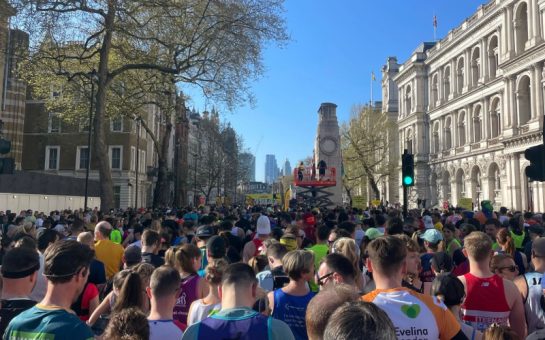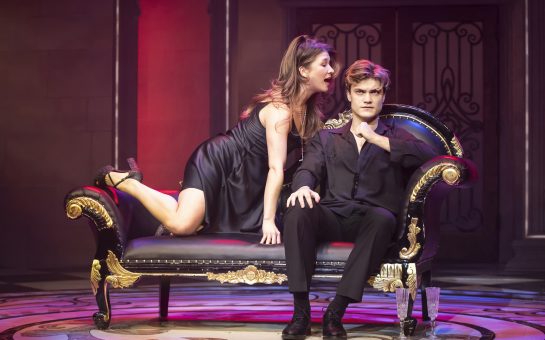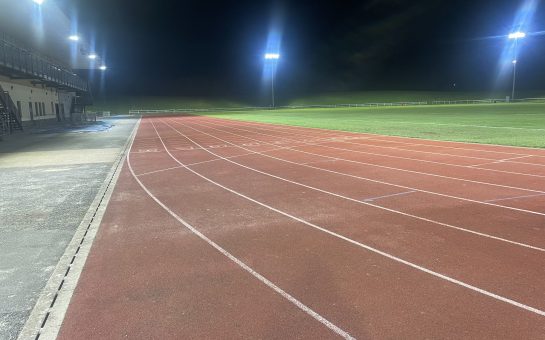Some of Britain’s most renowned artists are behind the posters – but these works of art don’t seem to have gone down well with the public.

Art is almost always controversial, but does that necessarily make it creative?
There will forever be endless debates about the value of abstract art but when does it cross the line from being interpretive genius to just plain uninspiring.
There is always going to be great difficulty for anyone to create art that inspires a nation but to try and achieve this can you really do something that lacks clarity of vision?
Organisers of the Olympic and Paralympic Games have not exactly been sprinting for gold in their efforts to inspire the country and the latest posters really do not look like they are going to make the podium.
Some of Britain’s most well renowned artists, such as Tracey Emin and Rachel Whiteread, are behind the posters.
The works are clearly indicative of a fast-paced modern era where the digital age has made everything less detailed and more symbolic.
The London Organising Committee for the Olympic Games (LOCOG) say they are proud to be able to use the games to showcase some of the UK’s leading artists on the world stage.
“The primary objective was artistic excellence and some of the UK’s greatest artists have been commissioned.
“The brief for the artists encouraged them to celebrate the Games coming to London and to look at the values of the Olympic and Paralympic games.
“Each image is a distinct interpretation of either the Olympic or Paralympic Games by the individual artists and the diversity of the series demonstrates the extraordinary creative talent that exists within the UK.”
Initial public reaction is quite strongly against the posters themselves. ‘Utter rubbish’, ‘child drawings’, are some of the less severe comments the posters have received in online forums.
Wimbledon resident James Simmons said: “I think the Olympics posters are pretty shocking to be honest. They’ve had a long time to do them and I don’t think any of them represent the Olympics as they should do.
“We have Tracey Emin who has done a normal sketch as usual, we are not looking for the usual we are looking for what they keep saying is a once in a lifetime event for Londoners which should have a once in a lifetime sketch.
“I don’t feel they reflect the Olympics.”
Another Wimbledon resident, Craig Smith, said: “You’re having a laugh, award-winning artists? My daughter could do better than that. What a heap of s***.
“It’s a load of rubbish.”
Obscure mascots, logos and sculptures have all featured in a sea of quite baffling works.
The Olympics logo was heavily criticised when released in 2007. Over 50,000 people signed an online petition for it to be scrapped.
Former London mayor Ken Livingstone called it a ‘catastrophic’ mistake after parts of the video were thought to possibly trigger epileptic seizures. The artwork cost £400,000.
Criticism has also been laid upon the distinctive £22.7million monumental Olympic sculpture that looks like a poorly built rollercoaster and the Olympic and Paralympic mascots which are literally two drops of steel from Bolton.
It all remains a far cry from the power and simplicity in the promotional art to the 1948 ‘Austerity Games’.
The 1948 poster focused on three simple images: the iconic Olympic rings, an Ancient Greek athlete and the Houses of Parliament on the River Thames. It was simple, but effective.
Art expert Maria Howard believes though some pieces do inspire, their longevity is questionable unlike some classic Olympics posters.
“The 2012 Olympics posters range from witty to downright dull. The shortlist is compiled of established artists and the results are entirely predictable.
“Emin appears to have misread or not bothered with the brief, preferring to palm us off with her usual self-indulgent scribblings. Riley sticks to her stripes and Hodgkin to his waves of colour.
“Rachel Whiteread stands out as someone who has taken a fresh approach and Michael Craig Martin’s graphic style will appeal to a wide audience and look good on the walls of the underground.
“I also like Anthea Hamilton’s poster as a classic take but still think none of these will really last like the 1948 London posters or the classic communist designs of Moscow 1980.”
In essence these posters have failed to inspire the public which was their primary purpose.
By commissioning some of the UK’s most prominent artists the Olympic and Paralympic organisers have left them free reign to ignore the hearts of the public.
This is surely a tragic way to lead up to an event London will not soon see again.




